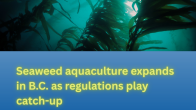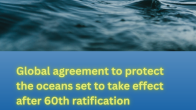Glass Sponge Reefs
Beneath Canada’s North Pacific waters lies a globally-unique biological treasure: glass sponge reefs. These sponge reefs are made from tiny glass spicules (needle-like skeletal elements), and were thought to have gone extinct during the Cretaceous period 145.5 to 65.5 million years ago. Scientists were very surprised when sponge reefs were discovered in Hecate Strait in 1987.
These "living fossils" are found in only a few other places on the west coast of North America and the largest known specimens sit on the bottom of Hecate Strait and Queen Charlotte Sound. The reefs here are up to 9,000 years old and often take the shape of large mounds, some of which have grown to the height of a seven-story building (21 metres). Altogether the reefs covers about 1,000 square kilometres seafloor (map). Sponge reefs provide structure, habitat and nurseries for many species, particularly rockfish.
One-half of the globally unique glass sponge reefs in Pacific North Coast waters have been destroyed. Most of the destruction has been the result of bottom trawling, from which the damaged reefs are extremely slow to recover (if they can recover at all). When scientists proved that the ground fish trawl fishery was damaging the reefs, fishermen voluntarily stopped fishing in the area. In 2002 DFO used the Fisheries Act to make the closure enforceable.
Despite these measures, the reefs are still at risk from certain fishing and shipping activities. In June 2010, Fisheries and Oceans Canada identified the glass sponge reefs of Hecate Strait and Queen Charlotte Sound as an “Area of Interest” and began the formal process of establishing a Marine Protected Area (MPA) around them. Living Oceans Society is participating in this process to ensure that these rare and fragile reefs are not damaged further by human activities.






